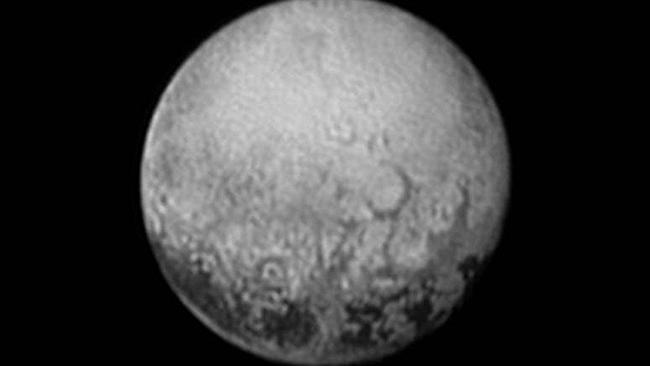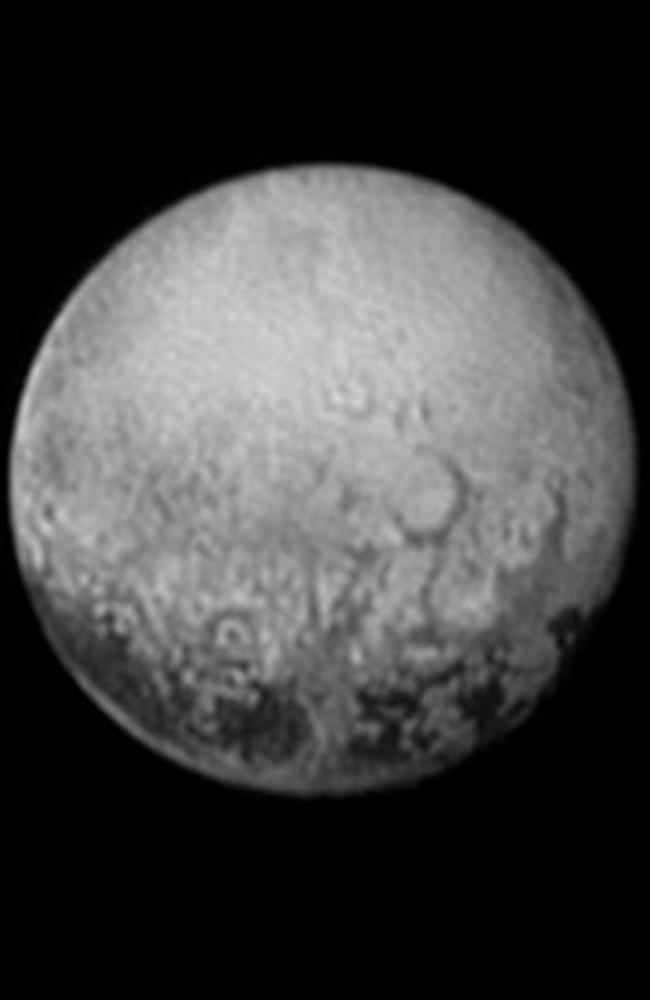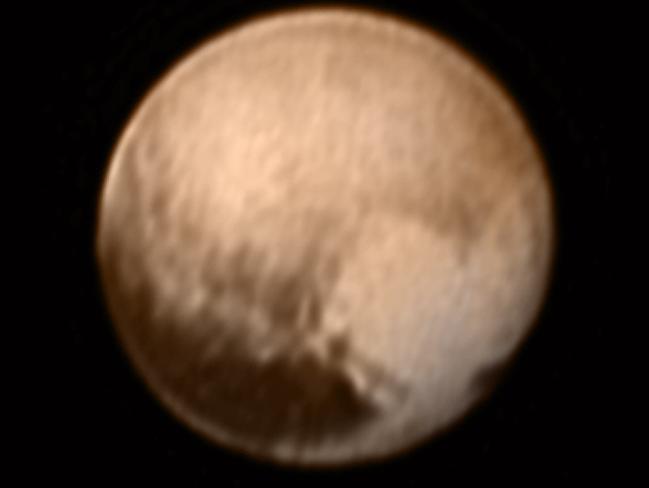First ‘sharp’ photo of Pluto reveals mysterious dark spots
IT’S our first — and last — glimpse of Pluto’s “dark side”. So what are those mysterious black blotches?

IT’S our first — and last — glimpse of Pluto’s “dark side”. So what are those mysterious black blotches?
As the New Horizons space probe races towards its close encounter with Pluto in three days time, it’s just beamed back the best view we’ll ever get of the face of Pluto turned permanently towards its large moon, Charon.
As the probe gets closer, Pluto will present its other half for examination.
Whoa! Brand new #Pluto image shows real geology at last, and the @NewHorizons2015 team reacts. http://t.co/yb3bAuyFMj pic.twitter.com/mvyTARc7aa
— Corey S. Powell (@coreyspowell) July 10, 2015New Horizons will not be going into orbit. Instead, it will be attempting to cram as much research as it can in the 30 minute window of opportunity as it flashes past 12,500km above the surface at 13.8 kilometres per second.
This means it will only get a close look at the one hemisphere.
The probe is now about four million kilometres from the never-before-examined dwarf planet. It’s 4.8 billion kilometres from Earth.

Pluto’s ‘dark side’
There’s something strange about those blotches stamped on Pluto’s dimpled backside.
That’s a shame: This is our “the last, best look that anyone will have of Pluto’s far side for decades to come,” says New Horizons principal investigator Alan Stern in a NASA statement.
So figuring out what the blotches are could be a problem — unless they’re also on the other side, of course.
RELATED: Why we’re going to Jupiter’s ice-moon Europa
“It’s not even clear yet if they’re raised like hills, lowered like craters or flat plains that reflect light less well than the surrounding materials,” says Swinburne University astrophysicist Dr Alan Duffy.
“The biggest surprise is how regularly spaced they are, at this stage I’m stumped.”
Dr Duffy says one explanation could be they are the result of a fragmented comet similar to Comet Shoemaker-Levy 9 which struck Jupiter in 1994. “But then the damage would be likely more severe,” he says.
“The edges appear sharp, although irregular, so maybe it’s some kind of darker material that has settled into a depression, tracing the contours of the surface.”

Expectations are that Pluto’s atmosphere freezes solid during a centuries-long winter as its orbit spins far out from the sun.
“At first glance this should uniformly cover the surface like fresh snow blanketing a town,” Dr Duffy says. “Then in summer this turns straight into a gas. Perhaps these regions of Pluto are affected differently during the changing of the season.”
More data currently being processed may cast new light on the formations.
“When we combine images like this of the far side with composition and color data the spacecraft has already acquired but not yet sent to Earth, we expect to be able to read the history of this face of Pluto,” Jeff Moore of NASA’s Ames Research Center says.
But avid astronomers will likely get to resolve one question: What’s with Pluto’s enormous “love-heart”?
This eye-catching feature has been capturing imaginations since it was spotted a week ago.
The $US700 million mission due to pass Pluto on July 14 will offer the world’s first close look at the distant dwarf planet.
Gotta LOVE Pluto! RTs! pic.twitter.com/ID9u7F2rea
— NewHorizons2015 (@NewHorizons2015) July 9, 2015



